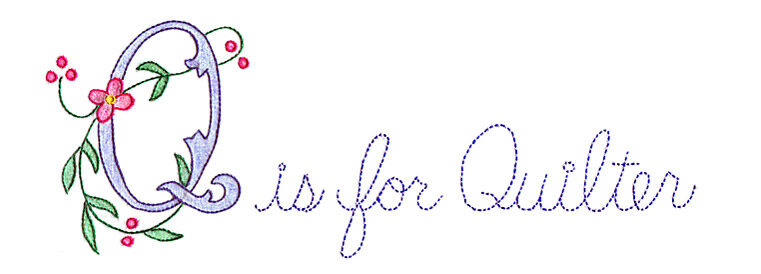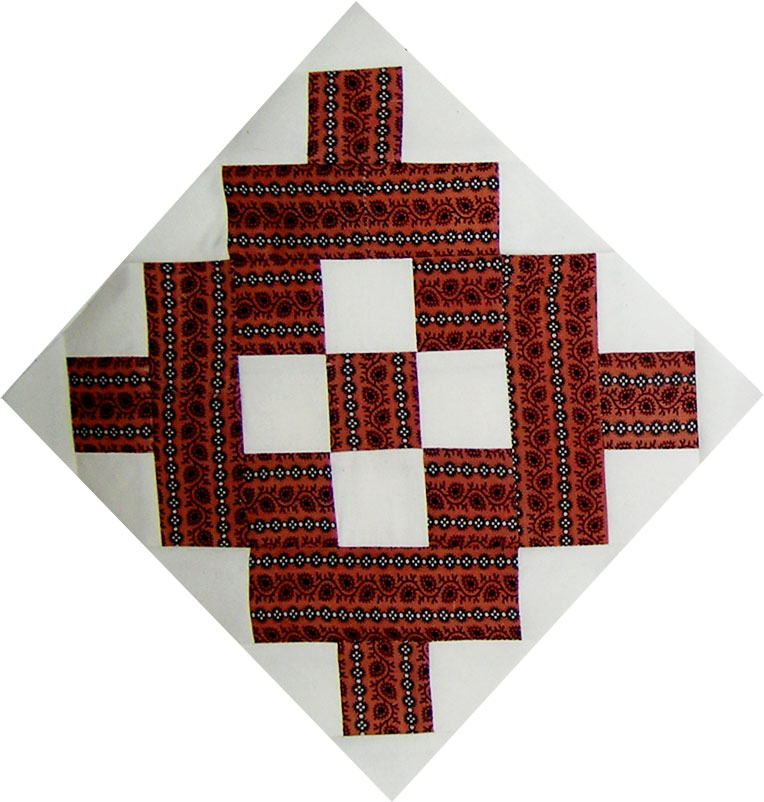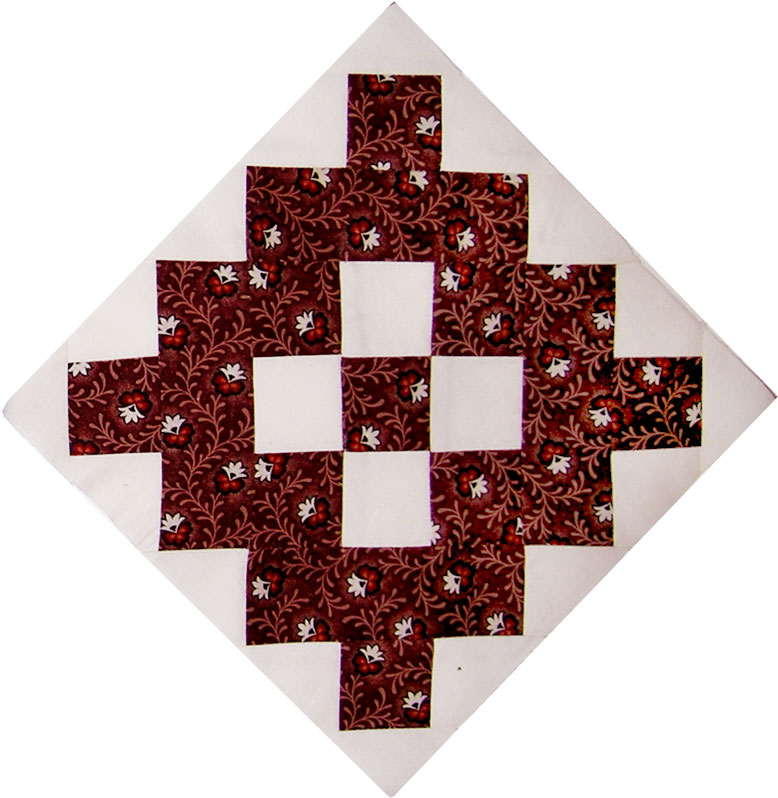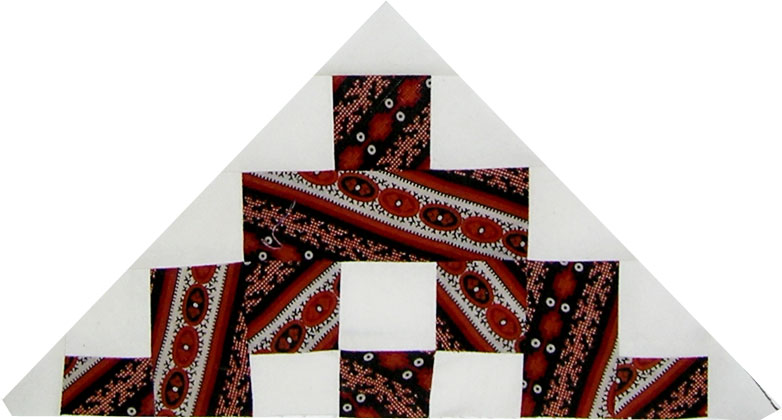First, I should let everyone know that I talked with Karen Alexander, the quilt historian who commented about this quilt top and suggested I should not take the top apart because it was a treasure. Karen’s interest is researching quilts with signatures, and she mistakenly believed that my quilt had signatures on the album blocks. She didn’t appear to have a problem with me taking the quilt apart once she realized this.
I can see how a collector of antique fabric might be interested in this top (especially the centennial print), but the construction and stitching of the top are so crude, I can’t imagine what anyone would do with it, except perhaps document the fabric. Also, once I examined the top carefully, four of the prints were weak and tore easily (including all of the sashing). In any event, I made the decision to take it apart and remake it and I hope I’m not offending anyone. I’m not really a quilt collector — just a quilter who likes to work with old fabric. At least I’m not making a teddy bear 🙂
I’ve sewn 4 blocks so far (2 whole and 2 half), and was surprised at how many pieced pieces there were — lots more than I imagined. I always think it’s interesting to see this in old quilts — I do it myself when I’m running short of a particular scrap, but some of the pieces she added are so small — just a tiny corner on some. Her original blocks are around 10 1/2″ and mine are about 8″. Her finished square pieces are about 2″, but the rectangles are almost 1/2″ narrower. Honestly, I don’t know how she managed to put these blocks together and I’m not surprised that the top was so lumpy.
After I remove the stitching, I toss the discolored muslin and sort out the printed pieces to see how I might improve the piecing. Next, I make any changes in the extra seaming (making the pattern smaller provided a little more flexibility in positioning the templates and eliminated some of the extra seams). Then I soak the and rinse each piece to remove dirt, press, draw around the template and cut. I’m having a lot of fun working with these blocks and trying to figure out the best way to piece them — I love the problem solving and puzzle aspect of it. Even the tiniest leftover scraps are being saved for a doll quilt.
This block was fairly simple because it’s one of the few that didn’t have seams in the pieces.
This one was had several seams where the stripes didn’t match up, so I tried to fix those seams before cutting the pieces out.
There were two different prints in this original block, but one of them was rotten. It was tricky getting even a half block out of the remainder — lots of extra seams were required.
This last block is a bit odd because she cut all of the pieces on a slight bias. I wanted to use them anyway — I think it brings at least a bit of the original wonkiness to the revised quilt top.






The newly sewn blocks look wonderful! I edit, remake, or repair old tops/quilts all of the time. I don’t feel there’s anything wrong with changing an old top…unless it’s historically significant. This top and the ones I have are just tops made by anonymous quilters of times past. Changes that are made just make the top or quilt have more value because it makes them usable. 🙂
I really like the wonky block!
The blocks are so beautiful. Your work will only enhance the quilt more. It’s going to be amazing when you are done 🙂
Your skills are amazing! These re-done blocks retain the charm of the original with the added benefit of superb craftsmanship!
Kudos to you!
Jane
I like the wonky block too! It reminds me of braiding. All of your new blocks are GREAT! It’s wonderful to have found something you enjoy doing this much and to have an opportunity to work with these antique fabrics – EVEN if you wanted to make a teddy bear!
The fabrics are certainly a treasure to have. I like the way the pieces on one of the blocks do not appear to have been cut on the straight of grain. Gives it a different look.
I’m kind of a purist when it comes to things (like people who would cut up a perfectly good quilt for a teddy bear!) but it seems to me like you’re giving these fabrics another lease on life – especially when there’s so much damage and what sounds like a lack of craftsmanship. The new blocks are really pretty!
Too bad about the sashing fabric! It was very striking, I thought. Your new blocks look great. The fabric is so much nicer looking in the more precise blocks. I am sure the new muslin has a lot to do with it, but the fabrics just look so much more ‘comfortable’ in thier new settings!
I think it’s great what you’re doing. The top wasn’t usable as it was, and you’ve really captured the heart of quilting, to use what you have to make a thing of beauty and practicality.
I really like the wonkiness in the last block. I find it very appealing.
I was expecting a signed pieced quilt. I thought that a signature quilt was what they called a signed quilt. Your quilt is what came up for a signature quilt and I was trying to make what a quilter here called a Kansas dugout quilt but it is nothing like your just 6inch squares
with added triangles of material on two corners
Your is beautiful but I’m new to this and want the squares ready to sign in april. So have to. Have a bunch